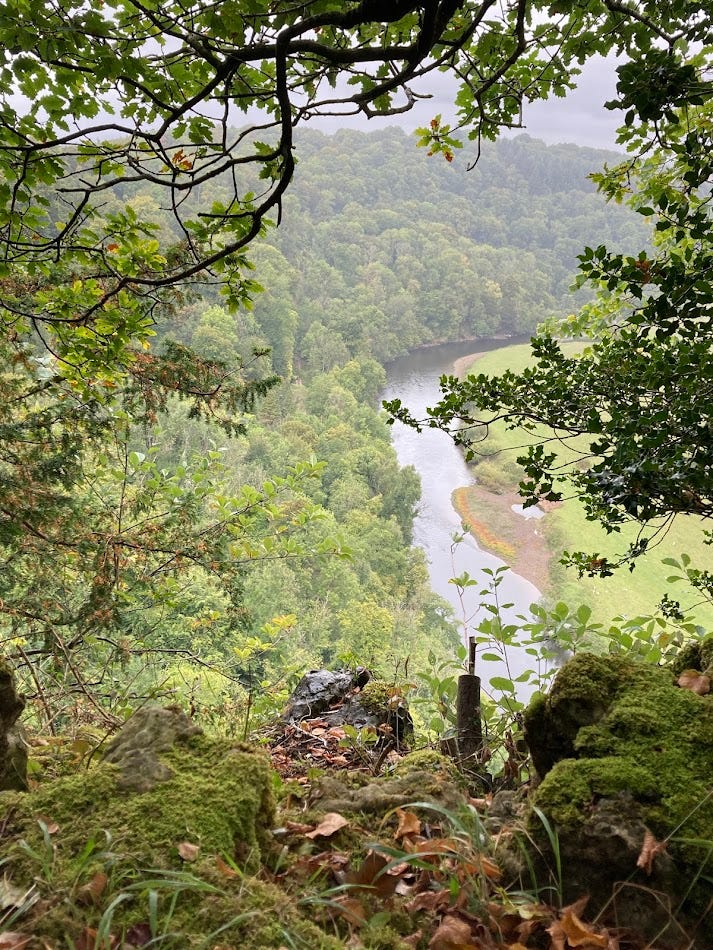I
Turn left and join the crowd for
A spectacular viewpoint attraction,
Safely walled and fenced on all four sides
To keep you away from cliffs and danger.
Accessible landscaped paths guide you
From car park to viewpoint via café -
Once-impressive Iron Age ramparts levelled
To suit twenty-first century tourism.
I followed the signs, I admired the view,
I read on the notice how I might see
Peregrine falcons that nest on the cliffs,
If only the crowds weren’t there!
II
Turn right and strike out alone for
An exploration of ancient woodland
With glimpses of river and gorge below
And spectacular views from rocky outcrops.
Untamed, unmanaged, unguarded, unsafe,
A natural landscape of woodland and cliffs -
Dry leaves underfoot, birdsong in the trees,
And not another soul to be seen.
I left the path, I wandered alone,
I approached a high cliff-edge and saw
A peregrine falcon perched on a rock
Before my very eyes!
This is where I saw the peregrine. It was perched on the rock in the centre foreground, which is about 3 feet lower than the mossy rocks I am standing on. Neither of us saw each other, therefore, until I was quite close. For a couple of seconds, the falcon looked at me, and I looked at it, both of us surprised as the other, I suppose. Then it spread its wings and soared off over the river, which is several hundred feet down in the gorge. You can see from the photo what a good spot the peregrine had chosen for its perch, at the top of the cliff with a commanding view.
By the way, if you’re wondering (as I did) about the name Symonds Yat, I looked it up. Apparently the word ‘yat’ derives from the same Old English root as ‘gate’, so Symonds Yat refers to the ‘gateway’ through the hills, where the River Wye flows through a narrow gorge. It is a spectacular place, even if you don’t happen upon a close encounter with a peregrine falcon!


